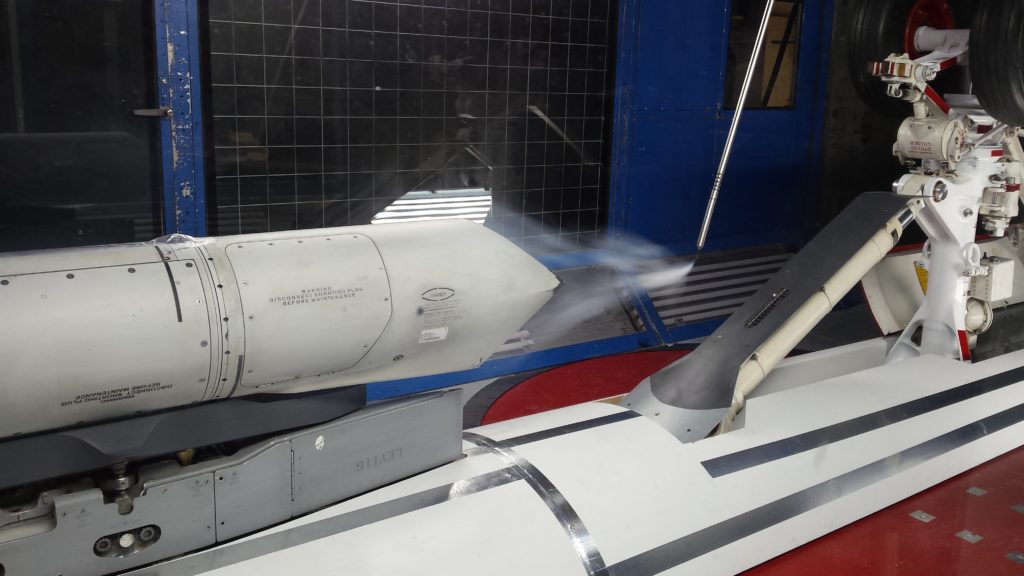Estimated reading time 5 minutes, 3 seconds.
In a two-by-three metre wind tunnel at the National Research Council of Canada’s (NRC) aerospace research centre in Ottawa, aerospace engineers are gathering data for the Royal Canadian Air Force (RCAF) this week to validate the placement of the sniper pod on the centreline station of the CF-188 Hornet.

“For this configuration, we are running at close to takeoff and landing speeds to simulate the take off and landing of the F-18, about 100 metres per second or almost 200 knots,” explained Melissa Richardson, an aerodynamics research officer and the project manager for the testing process, as wind whipped over the inverted nose landing gear and sniper pod.
The CF-188 fighter jet has carried a certified sniper pod on the left side of the fuselage, below the engine intake, since the aircraft were upgraded in the early 2000s. But lessons from recent operations over Libya in 2011 and Iraq and Syria between October 2014 and March 2016 convinced pilots they would have a better view of possible targets with the centerline placement.
“We found a lot of our missions revolved around looking at the ground, monitoring areas of interest and targets for missions that are four to five hours long,” said Capt Tom Lawrence, a CF-188 pilot and the project officer for fighter weapons and equipment.
“When [pilots] are manoeuvring their aircraft, there is a chance of the aircraft actually masking the targeting pod. Putting [it] on the centre of the aircraft allows a larger field of regard.”
Rather than bank left to maintain focus on a target, the new placement should ensure an uninterrupted view of the ground or target aircraft, “taking that frustration out of the pilot’s mind,” he said. “They can just focus on the imagery and the task at hand.”
Lawrence said it could also make it easier for pilots to employ weapons and assess battle damage effects.

The purpose of the wind tunnel tests is to measure the aerodynamics created by the nose landing gear on the sniper pod mounted behind it at times when it is most exposed to turbulence, said Richardson. Among concerns before the tests began were the effect of significant vibration on the pod and the possibility of debris being kicked up by the wheels and striking its protective glass shield.
“[We need to] make sure the aircraft is safe to operate with the sniper pod on this new location. That means it can take off and land without excessive vibration, that the loads are still within acceptable limits,” explained Capt David Demel, the certification authority with the RCAF’s Technical Airworthiness Authority.
“This is the goal of the current wind tunnel test, to confirm that before we move to the flight test phase in Cold Lake in the September timeframe.”
A second high-speed equivalent test will be conducted by the NRC at its high speed trisonic wind tunnel in about three weeks, using a six per cent scale model, that will include ensuring engine intake airflow is not affected. Test pilots with the Operational Test and Evaluation Unit in Cold Lake will then recertify operational airworthiness of the sniper pod in its new placement.
While the testing facilities are being provided by the NRC, the vibration data is being gathered and analyzed by Bombardier, which has provided some of the instrumentation. The sniper pod and landing gear were installed in the wind tunnel by L-3 MAS, which will have the task of mounting the pods in the new location on the entire CF-188 fleet–including the 18 F/A-18 Hornets the government is negotiating to buy from the Royal Australian Air Force–once approved.
“We’re all collaborating on the project as it goes through each phase, from technical airworthiness to operational airworthiness,” said Lawrence.








